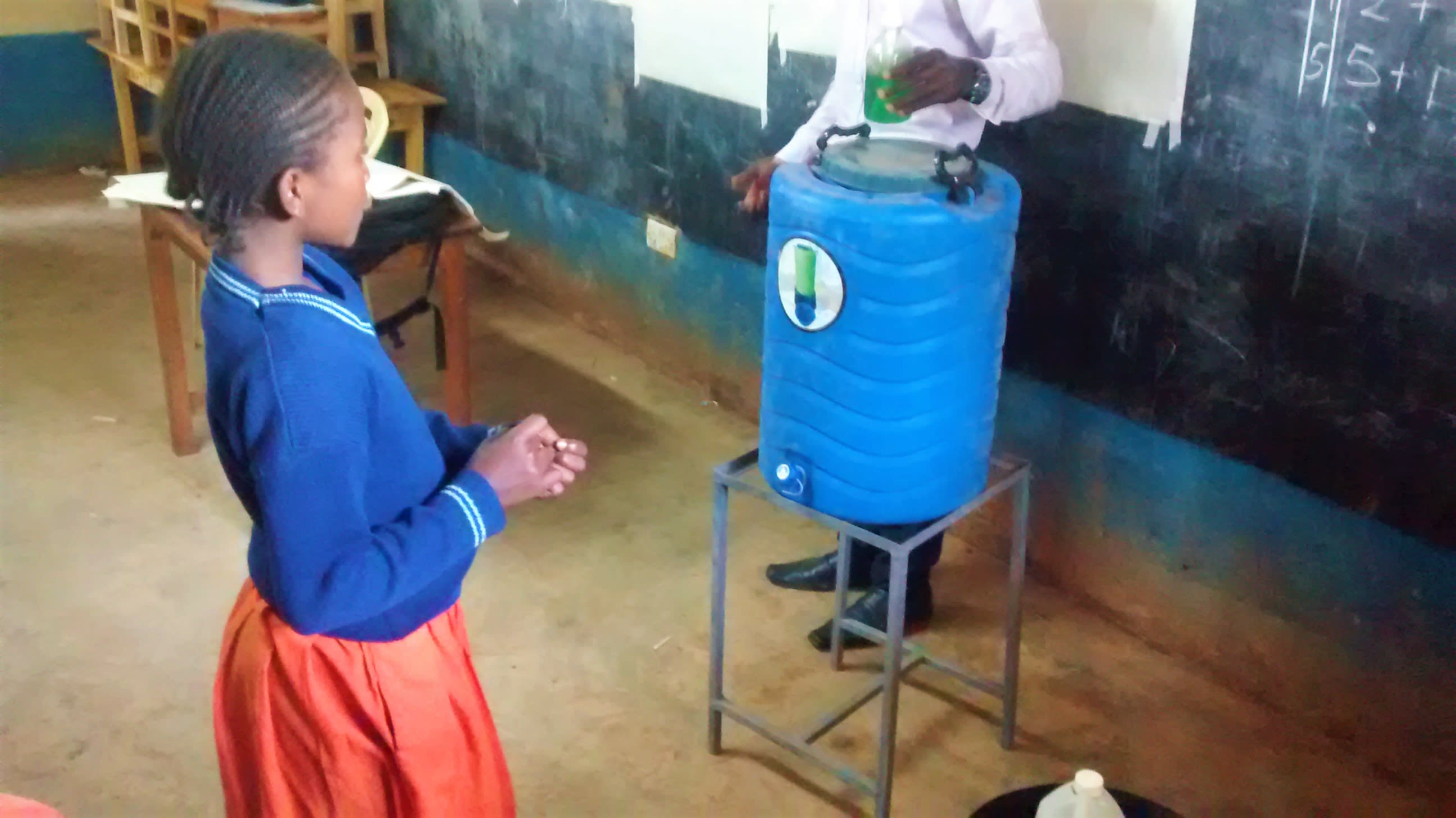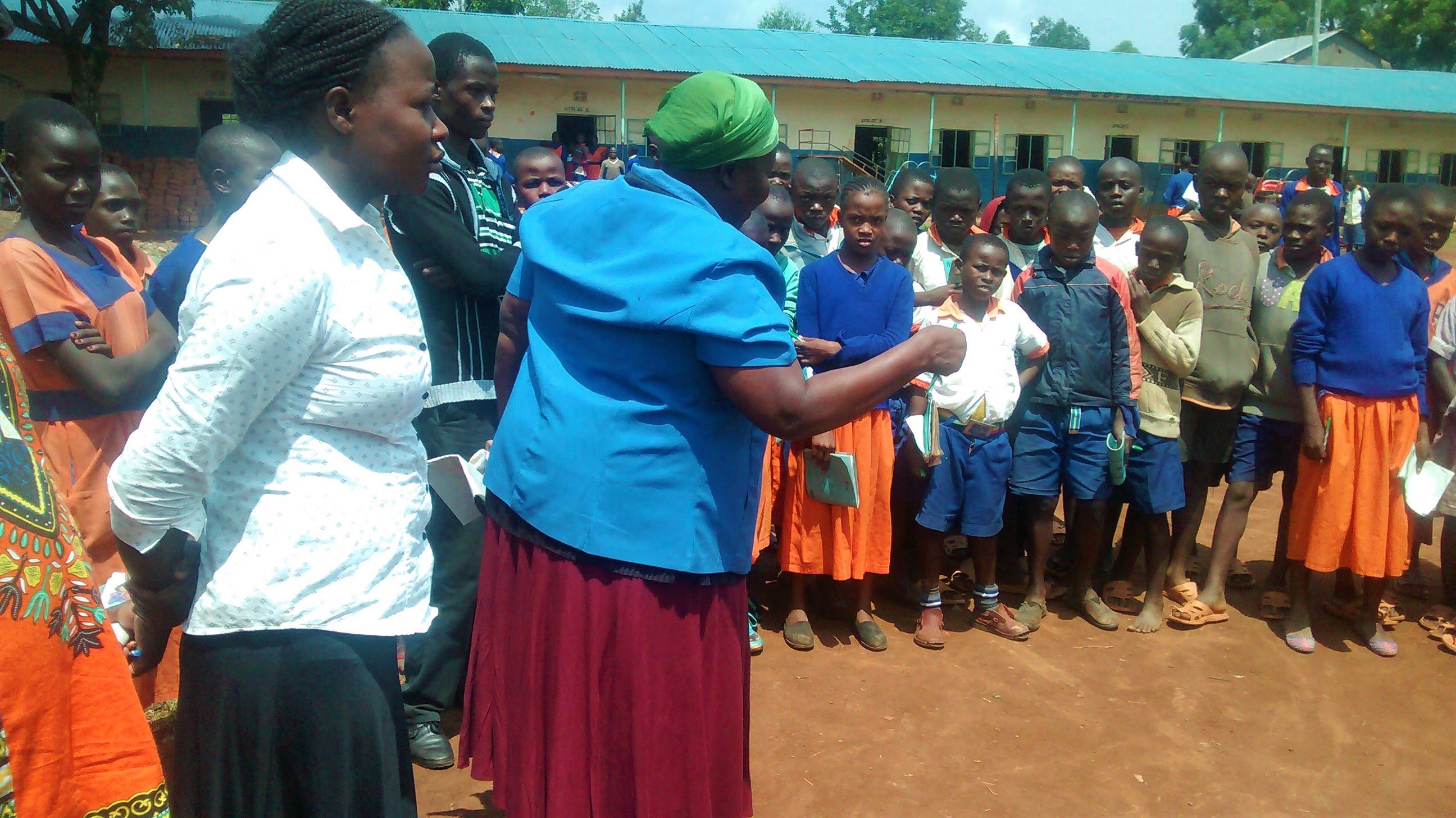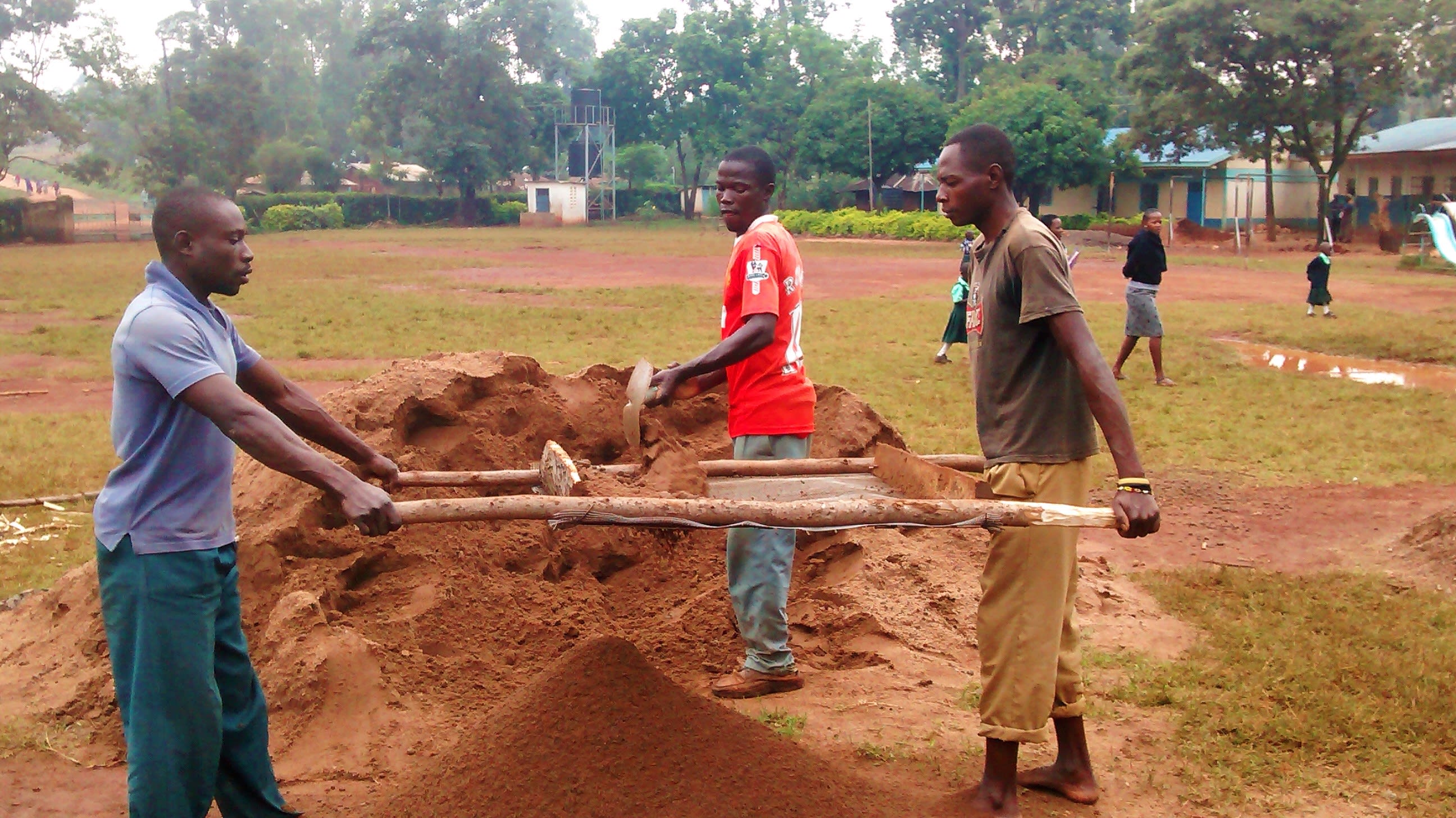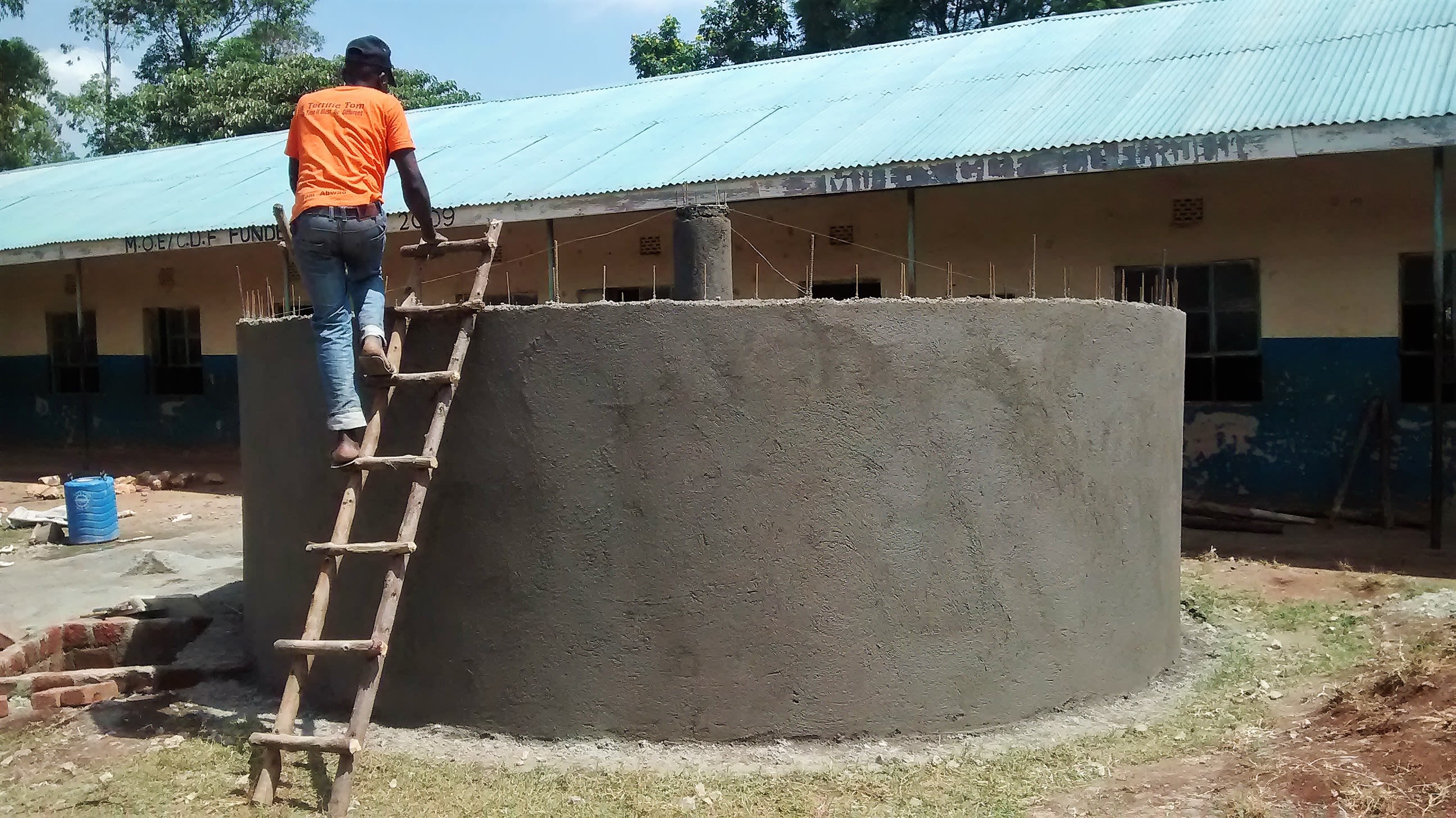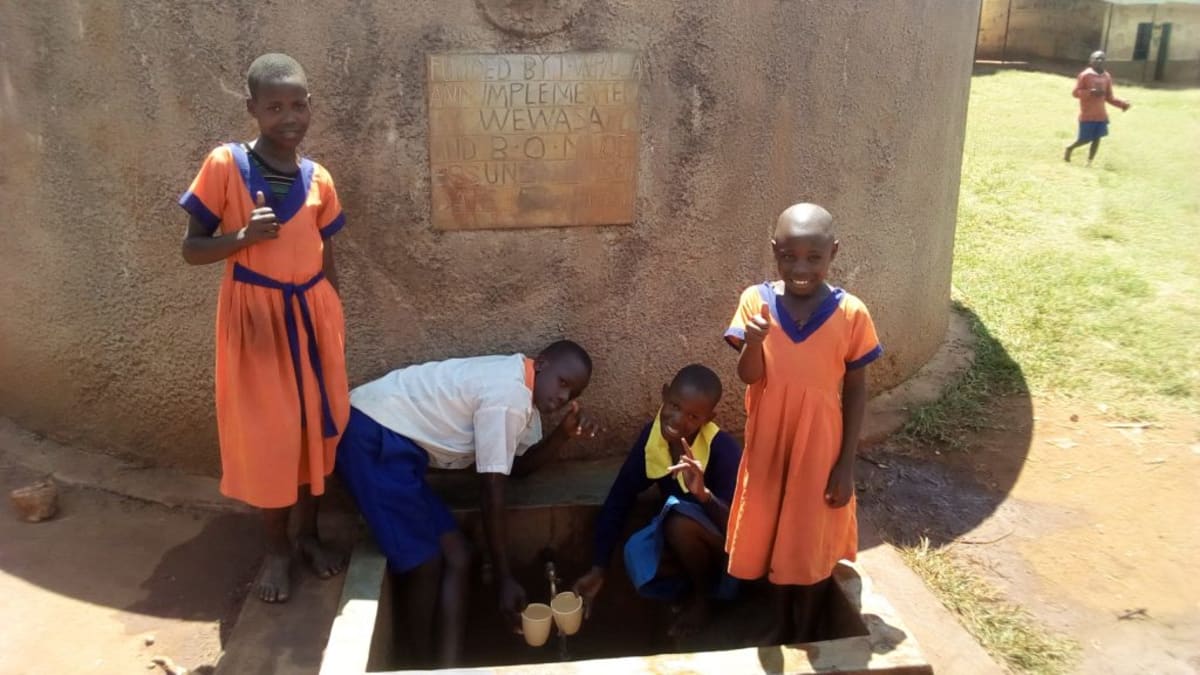This project is a part of our shared program with Western Water And Sanitation Forum (WEWASAFO). Our team is pleased to directly share the below report (edited for clarity, as needed).
Welcome to the School
Essunza Primary School was founded in 1961 by the community members. It had a humble beginning with makeshift classrooms made of mud floors and walls, and grass-thatched roofs. It has now grown into a full-fledged primary school that even has an Early Childhood Development Education (ECDE) section. The primary and the ECDE have 810 and 134 pupils respectively. There are also 25 teachers plus three support staff members employed, making the total school population stand at 972 people.
Students report to school by 7AM with a full jerrycan of water. This is put straight to use while students clean their classrooms for the first 20 minutes of the day. The rest of the day is spent in normal classes but for an hour lunch break at 1PM. Afternoon classes stretch until game time at the end of the day.
The majority of parents here are peasant farmers, but for the small percent engaged in business.
Water Situation
There is one 3,000-liter plastic tank on school grounds, but when full can barely serve the 972 people for one day. That is why school administration must require students' help in fetching water each morning.
Because each child brings their own water, it's impossible to ensure that any of it is clean. It comes from a multitude of sources. Once delivered to school, most water is kept in its container in the classroom. Other containers are sent to the kitchen for their use. A lot of the water students bring is turbid (muddy).
One of the ECDE teachers, Mrs. Mary Amisi, said "We do a lot of active learning with kids; singing, dancing, running and jumping. By the end of it, all children need nothing short of drinking water to pace down the heartbeat and cool the body. Unfortunately, there is no water that can serve the 134 kids we have. This torments us teachers!"
Sanitation Situation
There are 14 pit latrines on school grounds. Most of these have old wooden doors with holes large enough to destroy privacy. Others are almost full, while even more had walls beginning to slant (a sure, dangerous sign that soil is giving way). There is a foul smell because many students cannot wait a long time in line to urinate. Many run behind the latrines, depositing waste that attracts flies.
There are no hand-washing stations because there's isn't enough water. However, students and staff do their best to keep the school compound and classrooms as clean as they can without water.
Deputy Headteacher Declan Onyino said, "We have got cases of typhoid, stomachache and diarrhea that have been witnessed among the pupils. Malaria is something we have lived with, and it is an endemic disease in this part of the lake basin. Jigger infestation and skin disease is another health issue that we suspect spread very first among the pupils as they played, and some come with the problem from homes due to the miserable status of the houses they stay in."
Plans: Hygiene and Sanitation Training and Hand-Washing Stations
Training will be held for two days. The facilitator will use PHAST (participatory hygiene and sanitation transformation), ABCD (asset-based community development), CTC (child to child), lectures, group discussions, and handouts to teach health topics and ways to promote good practices within the school. The CTC method will prepare students to lead other students into healthy habits, as well as kickstart a CTC club for the school. This CTC club will oversee the new facilities, such as hand-washing stations, and make sure they are kept clean and in working condition. The two hand-washing stations will be delivered to the school, and the club will fill them with water on a daily basis and make sure there is always a cleaning agent such as soap or ash.
Plans: VIP Latrines
Two triple-door latrines will be constructed with local materials that the school will help gather. Three doors will serve the girls while the other three serve the boys. And with a new source of water on school grounds, students and staff should have enough to keep these new latrines clean.
Plans: Rainwater Catchment Tank
A 50,000-liter rainwater catchment tank will help alleviate the water crisis at this school. The school will also help gather the needed materials such as sand, rocks, and water from the spring for mixing cement. Once finished, this tank can begin catching rainfall that will be used by the school’s students and staff. Students will no longer have to haul water to school, for they will soon have safe water at their doorstep.
We and the school strongly believe that with this assistance, standards will significantly improve. These higher standards will translate to better health, better academic performance, and a better quality of life.

 Rainwater Catchment
Rainwater Catchment
 Rehabilitation Project
Rehabilitation Project














